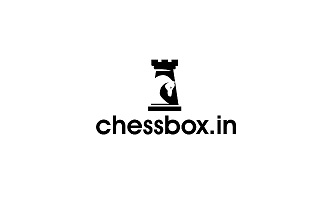Pawn endgames are the ultimate in chess strategy, involving deep analysis and accurate play. In this examination, we will decipher the particulars of pawn endgames and explain why they are so important for every chess player pursuing mastery.
Pawn endgames represent the culmination of strategic maneuvering and precise calculation on the chessboard. Understanding these endgames is not just an option but a necessity for every chess enthusiast, as they often determine the outcome of high-stakes matches.
The Importance of Pawn Structure
In pawn endgames, the structure of pawns plays a pivotal role in shaping the course of the game. A pawn structure can dictate the dynamics of the position, influencing the flow of play and determining strategic plans. A solid pawn structure can provide stability and control, while weaknesses can be exploited by astute opponents.
Techniques for Creating Passed Pawns
A passed pawn is a pawn that has advanced beyond all the enemy pawns. In simpler terms, it’s a pawn that doesn’t have any opposing pawns in front of it on the same file or adjacent files. This unique position grants it the potential to reach the eighth rank and promote into a more powerful piece.
Understanding how to create passed pawns is essential for leveraging positional advantages and securing victory. Techniques such as pawn breaks, pawn sacrifices, and pawn pushes pave the way for the advancement of passed pawns, leading to favorable endgame positions.
Creating Passed Pawns: Strategies and Tactics
- Pawn Breaks: Employing pawn breaks to create passed pawns involves strategically advancing pawns to disrupt the opponent’s pawn structure and create weaknesses.
- Pawn Sacrifices: Sacrificing pawns strategically can open up lines and create opportunities for pawn advancement, paving the way for the creation of passed pawns.
- Pawn Promotion Threats: Leveraging threats of pawn promotion can force the opponent into defensive positions, enabling the creation of passed pawns through tactical maneuvers.
Here are a couple of illustrative examples to highlight the significance of passed pawns
Protected Passed Pawn
A protected passed pawn refers to a pawn that has advanced beyond the enemy pawns and is shielded from direct capture by its own pawns or pieces.
Connected Passed Pawns (Steamroller):
When two or more passed pawns are on adjacent files, they become connected passed pawns.
Connected passed pawns are like a steamroller, exerting pressure on the opponent. Placing them on the same rank and advancing them together makes them difficult to blockade.
Outside Passed Pawn:
An outside passed pawn is separated by several files from the rest of the pawns. It deflects the opposing king from defending other pawns.
Understanding Pawn Races
The Drama of Pawn Races
Pawn races infuse pawn endgames with tension and excitement, as players vie to promote their pawns ahead of their opponents. Navigating pawn races requires foresight, calculation, and precise timing to secure victory.
Factors Influencing Pawn Races
- Pawn Structure: The configuration of pawns on the board influences the dynamics of pawn races, determining the feasibility of advancing pawns and promoting them to queens.
- King Activity: The activity and positioning of the kings play a crucial role in pawn races, as kings must support advancing pawns and deter opponent advances.
- Pawn Advancement: Timely pawn advances and calculated risks are essential for gaining the upper hand in pawn races and outmaneuvering the opponent.
The Concept of Zugzwang
Deciphering Zugzwang
Zugzwang, a German term meaning “compulsion to move,” embodies the strategic conundrum faced by players in pawn endgames. Recognizing zugzwang positions and exploiting them to gain the upper hand are hallmark skills of seasoned chess players.
Navigating Zugzwang Scenarios
- Forcing Concessions: Identifying zugzwang positions where any move worsens the player’s position and capitalizing on the opponent’s predicament to gain an advantage.
- Maneuvering with Precision: Maneuvering pieces with precision and creating zugzwang situations through careful planning and strategic foresight.
Example for zugzwang- Imagine a tense endgame scenario where both players have only a few pieces left on the board. White has a king and a pawn, while Black has a king.
White to move. The natural instinct might be to advance the pawn (e5), right? But here’s the twist: If White pushes the pawn, Black’s king will simply capture it, leading to a drawn position. In other words, any move by White worsens their position. White is in zugzwang.
The correct move for White is to pass (skip their turn). Black’s king is also stuck, unable to move. Eventually, Black will have to make a move, allowing White to promote the pawn and win the game.
This example illustrates zugzwang beautifully: being forced to move when every move weakens your position. Chess players often exploit zugzwang to gain an advantage or force a win.
Pawn endgames embody the essence of chess strategy, demanding unwavering focus, tactical acumen, and strategic insight. By understanding the intricacies of pawn endgames, mastering techniques for creating passed pawns, navigating pawn races, and recognizing zugzwang scenarios, players can elevate their game to new heights of excellence.
